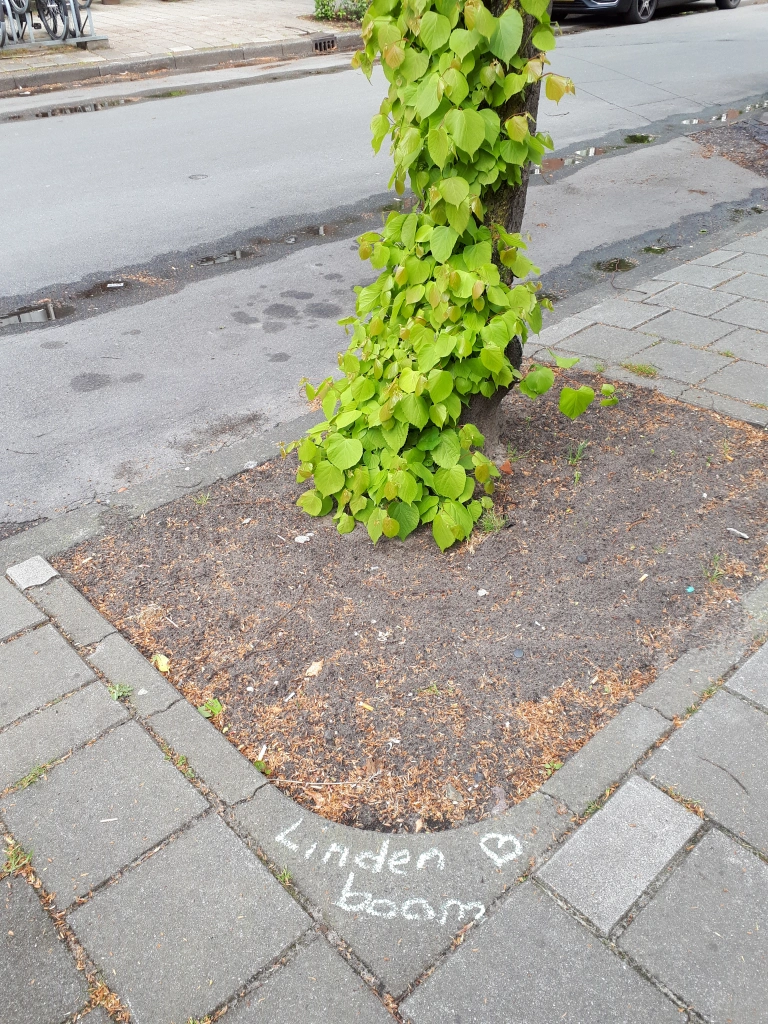I went for an earlier walk in the park today and was rewarded by finding the freshest and most delicious Lime (Tilia) flowers that I have ever harvested. Here’s the tree they came from. I turned them into a tea and shared it with the painters and my little girl. Lime tea is especially good on a warm summer day like today. It is cooling and refreshing.

Here’s a neighbouring Tilia tree in the park. It must be a different variety as everything about it is a little smaller than most Tilia in the park and the the leaves are a little darker. The flowers are also placed slightly differently on the twigs. I don’t know so much about the different varieties but I do know that Tilia tastes good and is very beneficial.

Next is a harmonious grassland combination of Plantain, Yarrow and Red clover in bloom. I set off today hoping to find enough Yarrow to make a tick-deterring tincture. I got rather side tracked by other herbs and in the end, didn’t notice enough to harvest. So instead of tincturing, two flower stalks are brightening up a small vase on my dining table. It’s good to remember just how many ways there are to benefit from flowers.

Here are two of my favourite things, my little girl and a huge Brassica plant. As with most naturalised and wild brassicas, all parts are edible and quite strong tasting. Just a carefully picked leaf or two should liven up a meal. (Thanks Jennie for correcting me on this one, I thought it was Wild Cabbage but that only grows near the coasts on chalky soil). This one may be Rapseed (Brassica napus). My friend Jennie Akse is running a herb walk focused on edible yellow flowering plants, around in Amsterdam at present. Have a look at the Meetup group for details.

Here is a herb that I find quite wondrous, Dark Mullein (Verbascum nigrum). Useful for many disorders, such as lung weakness and infection and most popular, I think, as an ear infection remedy.

Next up today is another herbal harmony, Veronica‘s towering blue spires mixed with more Mullien, Mugwort and Agrimony.

Here are some striking and Poisonous Lilies, in the formal garden behind Frankendael Huis and Merkelbach. I add this photo because yesterday I featured the very edible Daylily (Hemerocallis fulva), which can look very similar to the uninitiated. All parts of Lily are toxic. I have never thought about eating this type of plant but I find the pollen, when trapped in a living room with it for instance, very irritating.

Here is Catnip (Nepta sp). A member of the mint family, it can be used in similar refreshing ways. I like to make a sinus blasting pesto with it sometimes. It has many uses and is quite easy to grow. Many will already know about cat’s affinity to this herb. Some love it and find it quite a turn on, others seem to lack receptivity to it and many show more of a loved-up reaction to Valerian.

Another minty wonder is shown below, the often overlooked and trampled Ground Ivy (Glechoma hederacea). The pretty purple flower spikes are gone from most of the plants now but just look at that rich foliage! Now is a good time to harvest and use it or dry it for the winter. But why bother when this ground covering plant is around all year long?

Next is a delicious Garlic Mustard plant (Alliaria petiolata), showing different stages of seed pod development. This is a wonderfully tasty herb to add to all sorts of cooking. It is also great used as a salad leaf or flower. Looking at these seed pods reminds me of why it’s a pity to harvest the flowers of this super biennial. Less flowers, less seeds, less plants next year.

Next is a large plant which I’ve been hunting for some time – a first year Burdock (Arctium lappa), ripe for root harvesting. It seemed that all the Burdock in Amsterdam were second years, in bloom and not very nutritious or medicinal. Now that the council have mowed some patches of the park, some first year Burdock have been kindly left to develop. I won’t be digging this plant up but it’s good to see it and be reassured that a first year plant is easy to identify.

Lastly today, a type of Hyssop (Hyssopus sp.). I used this plant quite a lot last year, it is very aromatic and makes good tea. I’ll have a careful look at this one again soon to identify it fully.














































